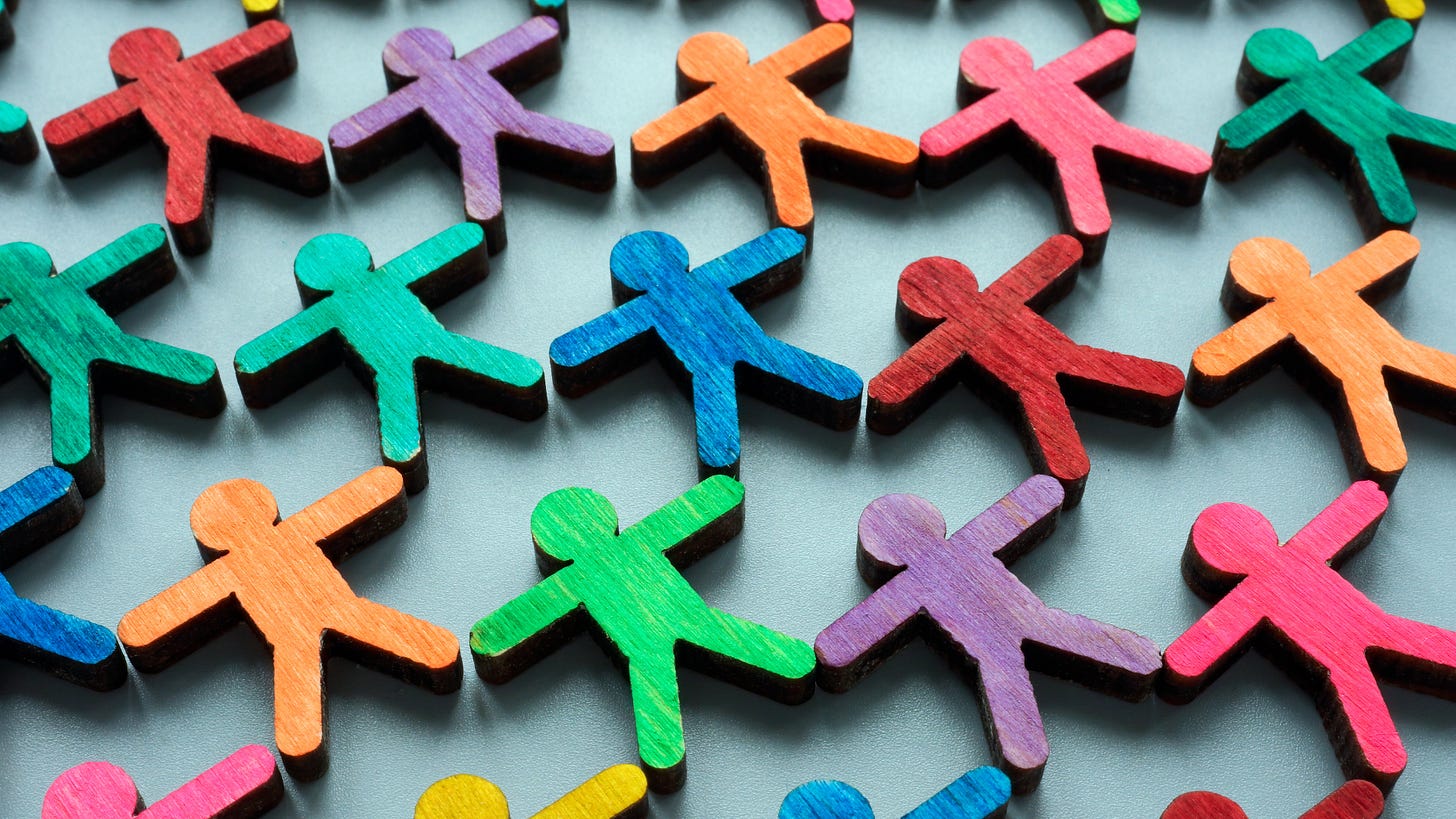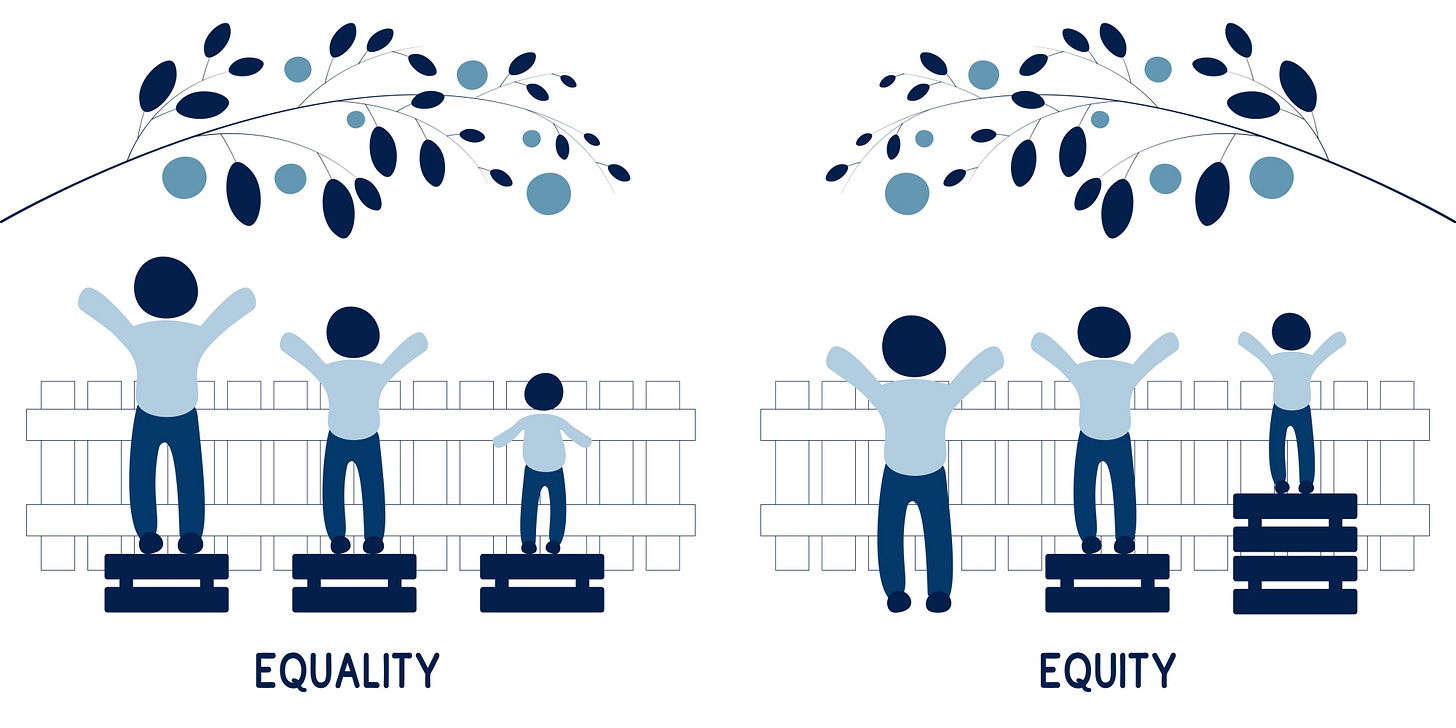The Good, The Bad, and The... Fair?
Navigating English Opinions!
Have you ever tried to explain why something just doesn't feel right, or why a decision was absolutely brilliant, but struggled for the words in English?
Well, you're not alone!
This week, we're diving into the wonderful world of expressing opinions, from what's "good" and "bad" to the trickier concepts of "fairness" and "equity."
Good vs. Bad: Beyond the Basics
We all know "good" and "bad," but English offers a smorgasbord of words to add flavour to your descriptions!
👍 The Good Side
When something is more than just "good," you can say it's:
Excellent/Outstanding: "Her presentation was outstanding – truly top-notch!"
Terrific/Fantastic/Brilliant: "We had a terrific time at the beach yesterday. The weather was brilliant!"
Marvellous/Wonderful: "What a marvellous idea! That will work wonders."
Superb: "The pasta at that new restaurant was superb."
Positive/Favourable: "The feedback on the project was very positive."
Useful Expression: To give something your approval, you might say, "Two thumbs up!" or "You nailed it!"
👎 The Bad Side
And for things that are less than ideal:
Terrible/Awful/Horrible: "The service at the hotel was awful, a truly horrible experience."
Dreadful: "The movie was dreadful; I almost walked out."
Negative/Unfavourable: "We received some negative comments about the new policy."
Disappointing: "The results were quite disappointing, to be honest."
Useful Expression: If something is really bad, you might say, "It's a disaster!" or "It's not up to scratch" (meaning it doesn't meet the required standard).
We often talk about good and bad in reference to habits. Watch this to help you
Fair vs. Unfair: Getting What You Deserve?
Now, let's talk about "fairness." This is when something is just, honest, and reasonable.
Fair: "It was a fair decision; everyone had a chance to speak."
Just: "The punishment was just for the crime committed."
Reasonable: "The price for the apartment was very reasonable."
Here is some help with more uses of ‘fair’:
But what about when things aren't fair?
Unfair: "It's so unfair that she got all the credit for our team's work!"
Unjust: "The whole system feels unjust."
Unreasonable: "Asking us to work late every night is unreasonable."
Useful Expressions:
If you feel strongly about something being unfair, you might exclaim, "That's not right!" or "That's out of order!"
If you want to play fair, you might say, "Let's be fair" or "Give everyone a fair shot."
Equality vs. Equity: A Little Deeper
These two words often get confused, but they have distinct meanings, especially when we talk about opportunities and resources.
🤝 Equality
Equality means treating everyone the same, giving everyone the same things or opportunities. Think of it like giving every person the same size bicycle, regardless of their height.
"The company aims for equality in salaries for men and women doing the same job."
"We believe in equal opportunities for all students."
Useful Expression: "On an equal footing" means having the same status or opportunities as others.
⚖️ Equity
Equity, on the other hand, means giving everyone what they need to reach the same outcome. It recognises that not everyone starts from the same place, so different support might be necessary. Imagine giving each person a bicycle that fits them so they can all ride comfortably.
"To achieve equity, we need to provide extra support to students who are falling behind."
"The goal is not just equality but equity, ensuring everyone has a real chance to succeed."
Useful Expression: To emphasise the idea of giving people what they need, you might say, "Level the playing field." This means to make a situation fair for everyone.
In the common illustration above, the hedge represents the systemic barrier that prevents the three individuals from having an equal view of a baseball game.
Here's the breakdown of the imagery:
The Hedge: The hedge is a rigid, unmovable obstacle. It symbolises an unfair system, rule, or societal structure that is the same for everyone but unfairly disadvantages some people. It's not a natural obstacle; it was put there intentionally, just like a system or a rule.
Equality (first panel): In the first panel, the "equality" section, each person is given the same thing—a single box to stand on. This is an "equal" solution because everyone gets the same treatment. However, because the individuals are of different heights, the boxes don't solve the problem for the shortest person. The hedge (the systemic barrier) is too high for them to see over, even with the box.
Equity (second panel): In the second panel, the "equity" section, each person is given what they need to overcome the barrier. The tallest person, who could already see, gets no box. The medium-height person gets one box. The shortest person gets two boxes. This "equitable" solution addresses the individuals' different starting points and allows all three to see over the hedge and enjoy the game. The goal of seeing the game is achieved for everyone, regardless of their initial height, because their individual needs were met.
The hedge is a powerful visual metaphor for a problem that is not an individual's fault but a flaw in the system itself.
Putting It All Together
So, whether you're describing a fantastic holiday, complaining about an unfair test, or discussing important social issues, you now have a richer vocabulary!
Remember, practice makes perfect. Try using these words and expressions in your daily conversations. Soon, you'll be expressing your opinions with confidence and clarity!
Challenge for you: Think about a recent situation in your life. Was it good or bad? Fair or unfair? Could you describe it using the concepts of equality or equity?



